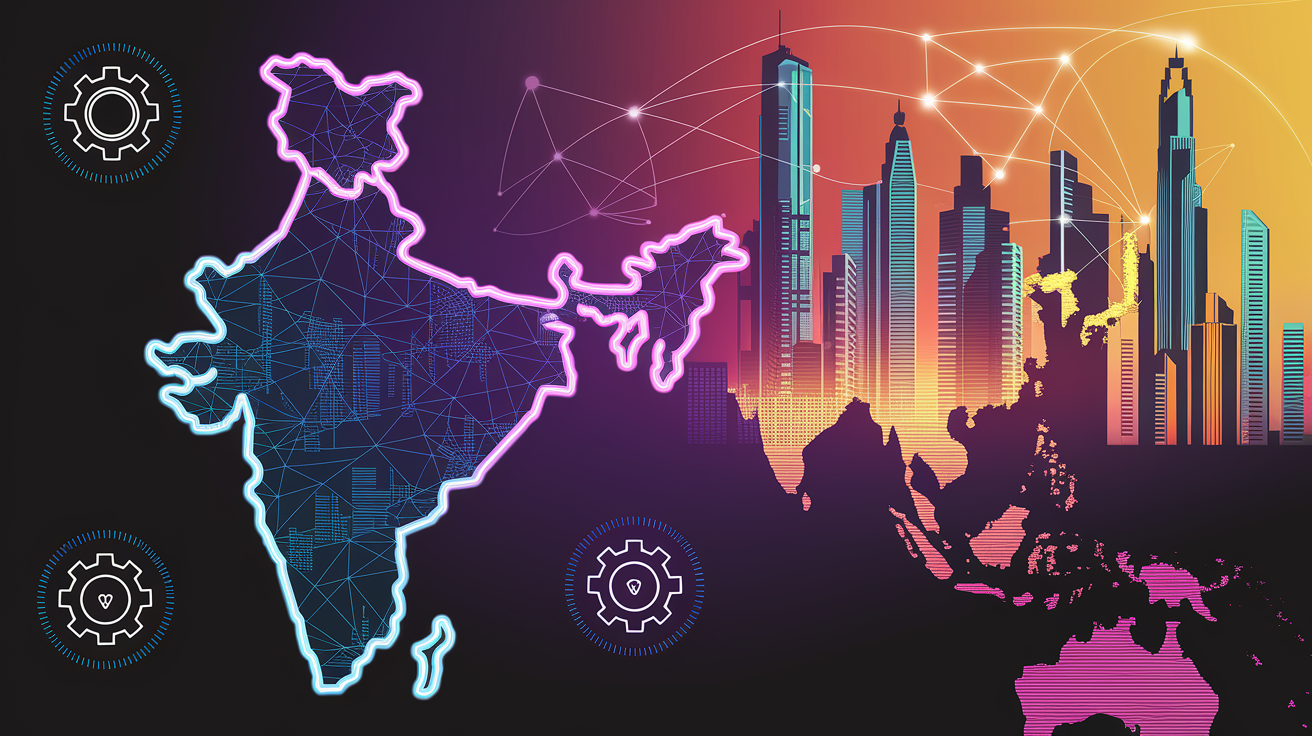In the global arena of tech startups, India and Southeast Asia emerge as vibrant hubs of innovation. Each region, with its unique characteristics, represents a rich tapestry of opportunities and challenges for investors. From the increasing availability of talent in India to the diverse market landscapes of Southeast Asia, understanding the dynamics at play can provide strategic insights for investors. This article examines growth rates and market dynamics, followed by an in-depth analysis of the financial landscapes, highlighting the nuances that define these expanding tech ecosystems.
Indian and Southeast Asian Market Dynamics: Towards High Growth!

India and Southeast Asia are in the spotlight as emerging centers for tech startups. These regions exhibit remarkable growth rates, shaped by various market trends and regulatory landscapes. In India, growth is primarily driven by a combination of direct state support and a tech-oriented audience. Southeast Asia, on the other hand, leverages its diverse market structure and digital transformation to spur growth.
In India, digital transformation plays a key role, particularly in sectors such as e-commerce and educational technology. The COVID-19 pandemic has accelerated digitization, enabling startups in these sectors to experience exponential growth. AI-based platforms benefit significantly from the rising demand for digital solutions. However, talent acquisition remains a challenge in the Indian market. The high competitiveness for technical know-how creates a dynamic yet highly competitive landscape.
The Southeast Asia, for its part, stands out for its market diversity. From the tech hubs of Singapore and Indonesia to emerging markets like Vietnam, these countries offer differentiated opportunities for startups. The trend towards e-commerce and FinTech is particularly strong, with companies investing in mobile solutions to cater to the rapidly growing consumer market. Governments in Southeast Asia have placed significant value on creating favorable regulatory conditions, greatly attracting startups to this region.
While India and Southeast Asia face challenges due to fragmentation and varied regulatory conditions, they demonstrate a remarkable capacity for adaptation. Indian startups grapple with complex regulations, while in Southeast Asia, regulatory fragmentation poses a more significant obstacle across national borders. However, these issues are not insurmountable. Successful startups distinguish themselves by their ability to innovate, tackling these challenges, and have the potential to become significant market leaders.
Overall, robust growth, continued digitalization, and ongoing investments from global sources are steering both regions towards a promising future. For tech startups, both India and Southeast Asia remain fertile ground, each with its unique growth models. Future developments will surely depend on the ability to navigate complex market conditions and further promote innovation capability.
The Financial Landscape for Tech Startups: Dynamics and Challenges in India and Southeast Asia

The financial landscape for tech startups is a dynamic field in India and Southeast Asia, with significant differences and similarities. In India, the sharp rise in venture capital investments showcases the confidence that local and international investors have in the country’s growth potential. With a growing pool of skilled developers and support from government initiatives, the Indian startup scene is rapidly expanding. However, these positive developments are hindered by challenges such as regulatory uncertainties, particularly in the cryptocurrency sector, which can make it difficult to access the capital that is urgently needed.
In Southeast Asia, the financial landscape is diverse and dynamic, fueled by strategic geographical positioning and proximity to significant markets. Singapore and Indonesia have established themselves as key centers for startup investments, where venture capital and family businesses play significant roles. Here too, companies face challenges in the regulatory environment, which varies due to the region’s fragmentation and different regulations from country to country. This fragmentation may require costly adjustments for startups wishing to expand across borders.
Another interesting aspect in both regions is the growth in the Artificial Intelligence (AI) sector. In India, we are witnessing a rapid increase in investments in AI, which is expected to contribute significantly to the national economy. By 2025, AI could contribute nearly 500 billion USD to India’s GDP. In Southeast Asia, especially in Singapore, AI is seen as a key technology for economic innovation, with the government committed to creating a favorable environment for AI startups.
In summary, both India and Southeast Asia, despite their differences, prove to be attractive markets for investors and promising for startups operating in the tech sector. While India benefits from a strong local market and an increasingly tech-oriented population, Southeast Asia, with its diverse markets and strategic location advantages, offers unique opportunities. Both regions share the potential to dominate the coming decades as leading tech hubs.